TRAVIS TAILWIND
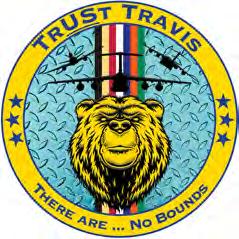



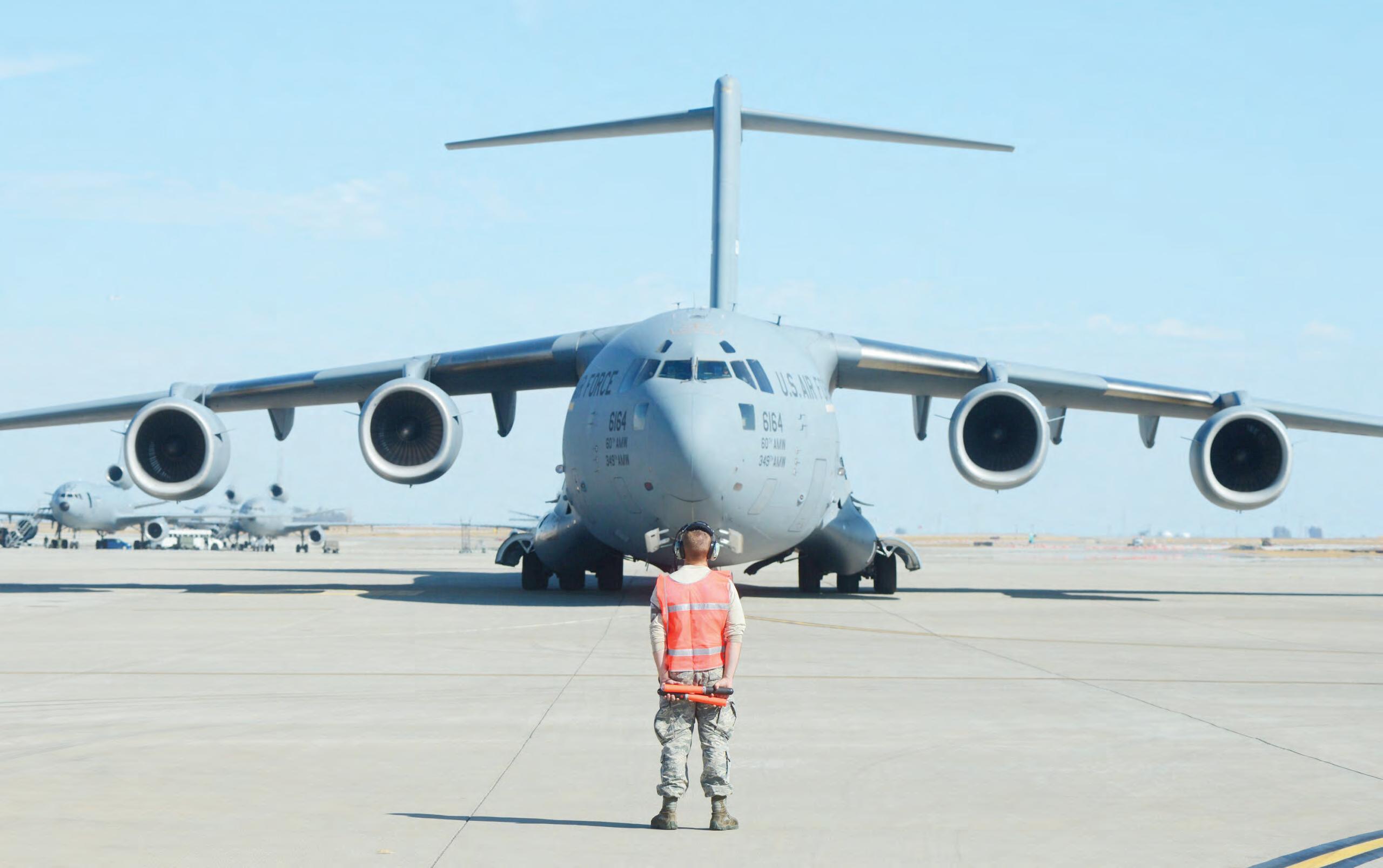


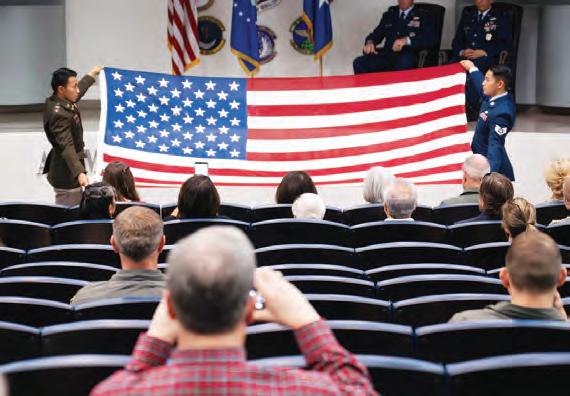
Top AF commander in Europe will be a 3-star billet as Pentagon trims
Tribune ConTenT AgenCy
WASHINGTON, D.C. — For the first time in decades, the next commander of U.S. Air Forces in Europe-Air Forces Africa will wear fewer stars on his shoulders than his U.S. military counterparts in the theater.
President Donald Trump has nominated Lt. Gen. Jason T. Hinds to lead the command nearly three months after Gen. James Hecker, the previous commander, retired following 36 years of service.
If Congress approves his nomination, Hinds is not up for a fourth star, according to the Air Force, as the billet has been re-designated a three-star command position.
“In alignment with the Department of War directive to reduce general and flag officer positions, the nominee for (USAFE-AFAFRICA) commander is at the lieutenant general grade,” an Air Force official said in a statement, Oct. 2.
Defense Secretary Pete Hegseth in May ordered the military’s active components to reduce the number of four-star generals and admirals by at least 20% and the National Guard to slash general officers by a minimum of 20%.
An F-22 pilot and former F-22 fighter squadron commander, Hinds already is in place. He served as the deputy commander under Hecker beginning in September 2024 and took over as the interim commander when Hecker retired, according to the Air Force.
Air & Space Forces Magazine first reported the downgrading in rank of the USAFE-AFAFRICA commander billet earlier this week.
Hinds’ nomination was sent to the Senate on Monday. He’s also in line to serve as the head of NATO’s Allied Air Command and director of the Joint Air Power Competence Centre at Ramstein Air Base, according to the Air Force.
As USAFE-AFAFRICA commander, Hinds will oversee some 35,000 active-duty, Reserve, Air National Guard and civilian employees, spanning 104 nations and eight wings.
He’ll succeed a long line of four-star generals, some of whom later served as the Air Force chief of staff, such as Gen. Mark Welsh III from See 3-star, Page 4
A
BASE — Veterans have a home for life at the Travis BX, enjoying tax-free shopping, military-exclusive pricing, national name brands and more.
Whether it’s keeping up with fall school shopping, decorating for Halloween and Thanksgiving or getting an early jump on winter holiday gifts, the Travis BX has our nation’s heroes covered.
Since 2017, honorably discharged veterans of all armed service branches, including Army, Air Force, Space Force, Navy, Marine Corps and Coast Guard, have been eligible to access their hard-earned benefit through ShopMyExchange.com.
In 2020, all veterans with service-connected disabilities, Purple Heart recipients, former prisoners of war and primary caregivers were authorized to also shop in-person at PXs and BXs. Since 2024, access to installations was made easier for disabled veterans with the implementation of an electronic verification process, requiring only a VA-issued Veteran Health Identification Card (VHIC), REAL ID driver’s license
or ID card.
All Veterans also have access to the Military Star card, a military-exclusive credit solution administered by the Army & Air Force Exchange Service. The card features an industry-low APR regardless of credit score, no annual, late or over-the-limit fees, unlimited rewards, free shipping on online orders, 10% off at participating Exchange restaurants and more. For more information visit aafes. media/MilStarPA.
Travis shoppers enjoy tax-free shopping, military-exclusive pricing and access to 6 million items online, including The Home Depot, Bass Pro Shops, Apple, Samsung, Under Armour, American Eagle, Columbia, The North Face, Serta, Purple and Sunglass Hut along with top beauty brands such as Bath & Body Works, Lancome, Shiseido, Clinique, Kylie cosmetics and more.
“Extending the Exchange benefit to veterans for life honors their service while strengthening readiness and resilience,” Travis Exchange General Manager Cathie Byrns said. “By shopping online or at the Travis Exchange,
See Travis, Page 6

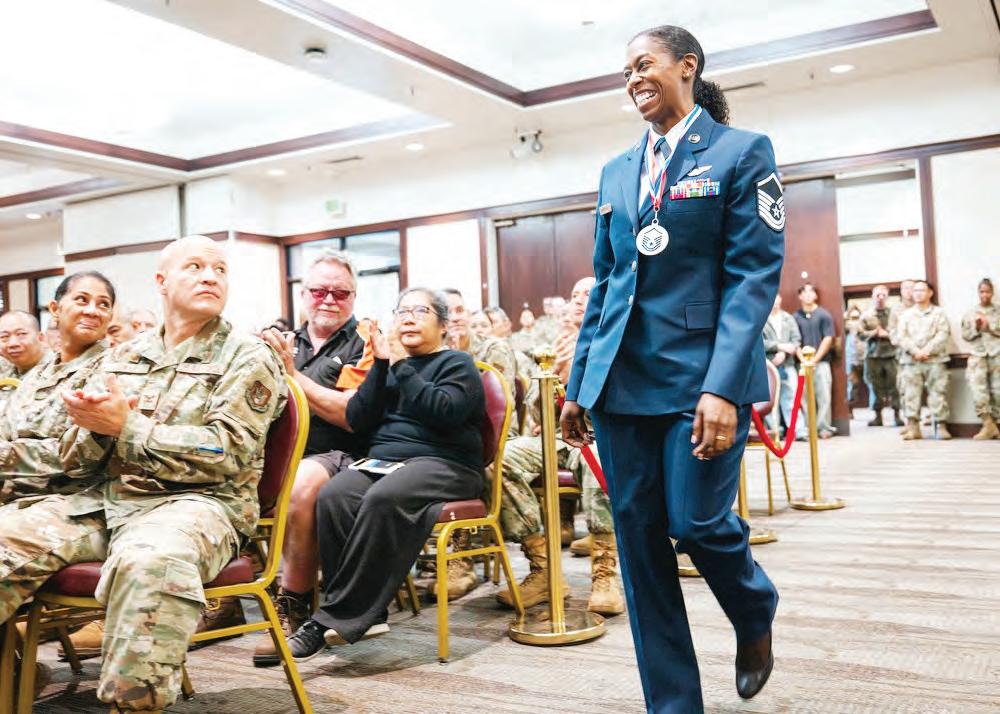


Serving

Air Force
and the surrounding
1250 Texas St., Fairfield, Calif. 94533 707-425-4646 | Fax 707-425-5924
Publishers: Foy S. McNaughton and T. Burt McNaughton
Advertising Manager: T. Burt McNaughton
Editor: Todd R. Hansen Layout : Aaron Rosenblatt
A
& A ir Force
TRAVIS AIR FORCE
BASE — Military children can take part in a free fun and creativity Saturday at Travis Main Exchange.
From 12 to 3 p.m., military kids can connect, play and color with Furblets and MixMashers to celebrate the joys of being part of the military community.
Military children are invited to explore the latest Furblets and MixMashers, including fan favorites like DJ Furblets and Avengers MixMash-

ers. The fun doesn’t stop there, kids can keep the fun going by unleashing their creativity at Furblet and MixMashers-themed interactive coloring stations.
“There’s nothing









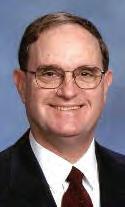

better than seeing our youngest heroes having a good time,” said Travis Exchange General Manager Cathie Byrns. “No matter the age, these events are all about laughter and lasting memories.”
Preregistration is not required. For more information, shoppers can contact the Travis Exchange or visit the Travis Exchange’s social media pages.

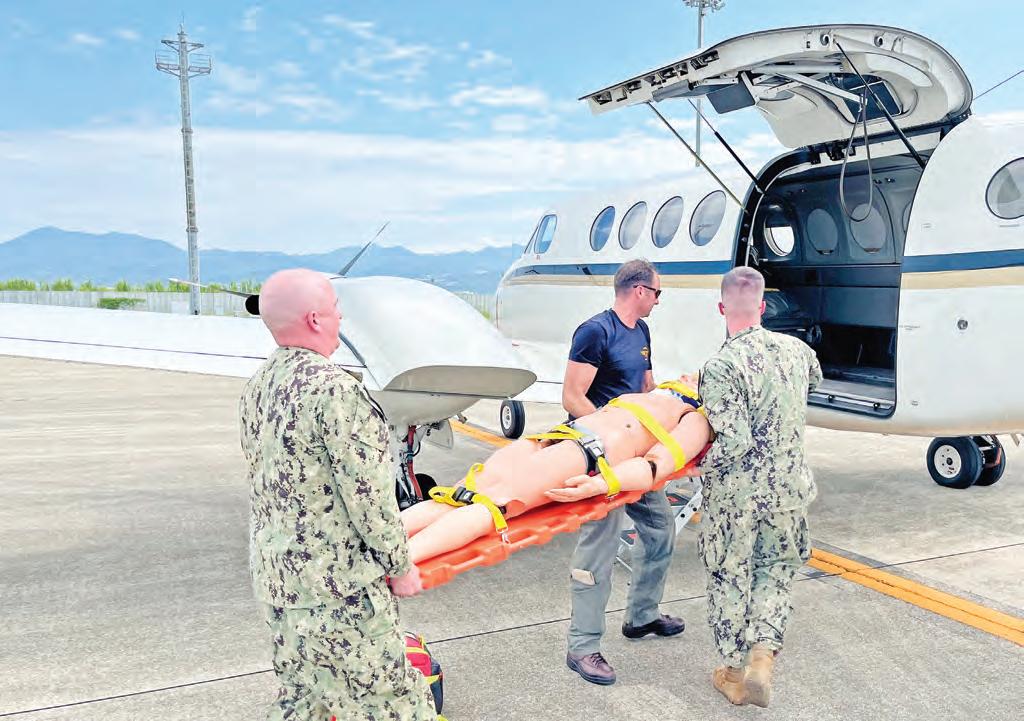
during a mass casualty drill at Nagasaki Airport, Japan,
Tribune ConTenT agenCy
ANCHORAGE , Alaska — Anchorage
Mayor Suzanne LaFrance grew up outside the city during the Cold War. And the specter of nuclear conflict and an attack on the area’s military infrastructure loomed over her childhood.
“The Soviet Union felt pretty close,” she said.
“I remember feeling a sense of fear, like: ‘We’re going to be the first ones in the line of fire. We’re this target.’”
taking place for decades. But this year, the military aligned with a second set of drills called Arctic Edge.
The two exercises brought together more than 5,000 troops to train not just in Anchorage but in rugged and remote sites across the state –from the Aleutian Island port of Dutch Harbor to the Bering Strait hub town of Nome to a highaltitude lake, where a naval unit practiced “diving scenarios.”
Lt. Alexander Johnson and Hospital Corpsman 3rd Class
Evan Talcott, both assigned to U.S. Navy Medicine
Readiness and Training Command (USNMRTC) Yokosuka, transfer a simulated casualty to a C-12 Huron aircraft
YOKOSUKA, Japan —
Navy Medicine Readiness and Training Command Yokosuka, Japan, conducted a large-scale mass casualty drill, Sept. 23, testing its ability to triage, treat and transport multiple simulated patients during a crisis.
The exercise included 10 simulated casualties, ranging from a femur fracture with controlled bleeding to complex scenarios such as punctured lungs, cardiac emergencies and burn injuries. Throughout the day, patients were received, stabilized and transferred, with the final casualty requiring medical evacuation through Naval Air Facility Atsugi.
In the culminating scenario, medical personnel from Navy Medicine Readiness and Training Unit Sasebo transferred a simulated casualty to Nagasaki Airport, where it was met by a C-12 Huron aircraft assigned to NAF Atsugi and a medical crew from NMRTC Yokosuka. The aircraft flew to Atsugi, where the patient was offloaded and transported by ambulance to Naval Hospital Yokosuka for further treatment.
“This drill gave us the opportunity to test not only our in-hospital care but also our coordination with outside commands, such as Fleet Air Western Pacific, to ensure rapid evacuation when needed,” said Nikolai Kerry, emergency manager at NMRTC Yokosuka.
Navy Capt. Torrin Velazquez, commanding officer of NMRTC Yokosuka, emphasized the importance of integrating new patient transport and aviation evacuation procedures into the command’s training cycle.
“Testing these new capabilities is essential to building the kind of muscle memory that ensures our teams can respond instinctively when seconds matter,” Velazquez said. “By practicing these processes until they come naturally, we strengthen our readiness and safeguard the lives of those who depend on us. I want to thank every sailor, civilian and partner command who played a role in making this exercise successful.”
Mass casualty drills are designed to prepare medical providers, first responders and supporting personnel for large-scale incidents such as natural disasters, terrorist attacks or major accidents. These

Hospital
Readiness and Training Command Yokosuka demonstrate the use of a wheeled litter carrier during a mass casualty drill in Yokosuka, Japan, Sept. 23. The exercise tested the command’s ability to triage, treat and transport multiple simulated patients during a crisis.
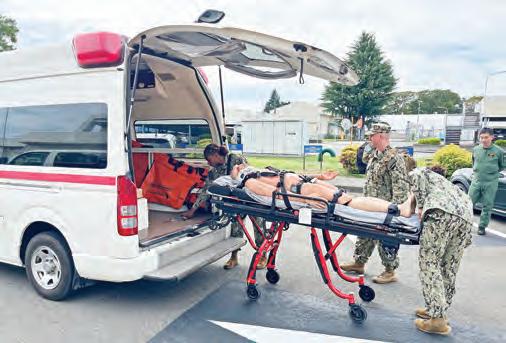
Lt. Cmdr. Matthew Thomas/U.S. Navy file
Medical personnel from U.S. Navy Medicine Readiness and Training Unit Atsugi load a simulated casualty into an ambulance for transport to U.S. Naval Hospital Yokosuka during a mass casualty drill in Atsugi, Japan, Sept. 23. The transfer followed a medical evacuation flight from Nagasaki to Naval Air Facility Atsugi, testing coordination and patient movement procedures across multiple Navy medical commands in Japan.
events test readiness by requiring participants to triage patients, allocate limited resources and
coordinate across commands in time-sensitive situations.
“While the scenarios
are simulated, the pressure is real,” Kerry said. “These drills highlight gaps in our procedures, strengthen teamwork across agencies, and most importantly, help us save lives when an actual emergency happens.”
The exercise featured realistic injuries on a timed schedule to challenge hospital personnel.
Early scenarios focused on orthopedic trauma, such as wrist and ankle fractures, while later patients presented more medically complex cases, including pregnancy issues and cardiac conditions.
Drills like this benefit both the Navy and the broader community by improving readiness, refining processes and ensuring all personnel know their
See Japan, Page 4

The Cold War ended and the Soviet Union collapsed without an attack on Alaska. And for the next three decades, the state’s elected leaders grasped for arguments to justify continued federal investment in the major military installations in Anchorage and the Fairbanks area.
But now, amid twin, allied threats from Russia and an ascendant China, Alaska is again becoming a priority for U.S. military leadership. They see the state not just as a base from which to send out American forces to overseas conflicts, but also a place that could be the site of actual warfare.
The new focus on Alaska was underscored by the August summit between U.S. President Donald Trump and Russian leader Vladimir Putin – as well as by visits to the state the same month by top military officials who came to observe large-scale drills, including one called Northern Edge.
The Northern Edge exercises take place every two years. But this year’s version was reimagined to simulate a conflict taking place specifically in Alaska – a change from prior iterations that had not contained as much of a geographic focus, officials said.
In the past, the exercises were “high-end training that occurred in Alaska,” said Rick Goodman, the U.S. Air Force brigadier general who directed this year’s edition of Northern Edge. “Now, this is high-end training that is occurring that is about Alaska, from Alaska.”
Goodman added: “The threats are growing.”
‘Two critical regions’
The Northern Edge exercises have been
Among the top brass in Alaska to observe were Adm. Christopher Grady, who was then vice chairman of the Joint Chiefs of Staff; Adm. Samuel Paparo, the Navy’s top Indo-Pacific leader; and Adm. Kevin Lunday, who leads the U.S. Coast Guard.
What policymakers and experts describe as the military’s renewed focus on Alaska marks a sharp change from the immediate postCold War era.
In an interview, U.S. Sen. Lisa Murkowski noted that two decades ago, the U.S. Department of Defense was threatening to close the major, Fairbanks-area Eielson Air Force Base – sending its 2,800 troops to Nevada, Louisiana and Georgia and placing the installation in “warm” storage.
Today, Eielson hosts two squadrons of cutting-edge F-35 fighter jets, with a recent federal investment of some $600 million in infrastructure supporting the planes. The military is also now exploring whether it could reopen a naval base on the remote Aleutian island of Adak, which was closed in 1997.
“We just kind of melted into the landscape, and everybody thinks about Alaska as remote and far away,” Murkowski said. “Now, things like the Chinese spy balloon a couple of years ago, things like the Trump-Putin visit –people were like, ‘Wow, I had no idea Alaska and Russia were so close. I had no idea of the geostrategic significance.’” She added: “They don’t think about the fact that we bridge two pretty critical regions.”
The designs of the recent exercises show how the military is thinking about Alaska amid
See Alaska, Page 7


















following 10 consecutive years of forward-deployed service in the U.S. 7th Fleet area of operations.
YOKOSUKA, Japan — The Arleigh Burke-class guided-missile destroyer USS Benfold (DDG 65) departed Commander, Fleet Activities Yokosuka, Japan, Sept. 29, following 10 years of forward-deployed service to U.S. 7th Fleet.
Benfold’s decade of service was recognized by senior leadership at a farewell ceremony with Commander, Destroyer Squadron (DESRON) 15. “Benfold successfully stood the watch in the Western Pacific for 10 years,” said Capt. Dave Huljack, commodore, DESRON 15. “This ship leaves with an amazing legacy as a workhorse for the fleet and a stalwart friend to our allies and partners. Over the last decade, Benfold and her crew have executed our nation’s tasking with strength and excellence. We will miss Benfold’s grit and determination but look forward to her crew’s continued success in DESRON 31.”
Benfold is scheduled to relocate to Everett, Washington, to support U.S. 3rd Fleet operations.
Benfold will also shift from DESRON 15 to the “Ke Koa O Ke Kai” (The Warriors of the Sea) of DESRON 31 after its transit across the international date line.
Benfold arrived in Yokosuka and joined Forward-Deployed Naval Forces – Japan (FDNF-J) in October 2015. During the ship’s decade-long tenure, it participated in numerous multilateral maritime exercises, such as: Malabar, Maritime Counter Special Operations Forces Exercise, Pacific Griffin, Valiant Shield, Keen Sword, Annual Exercise, and Res-

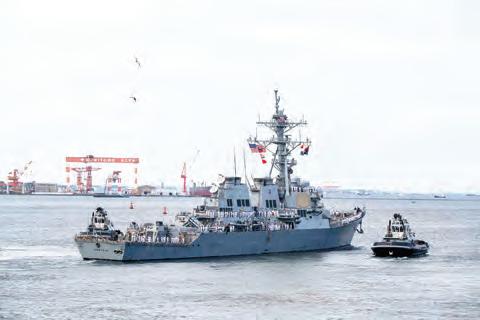
olute Dragon, working alongside allies and partners to ensure a free and open Indo-Pacific.
“Through tenacity and teamwork, Benfold’s decade assigned to the Western Pacific has allowed our crew to build on the ship’s great accomplishments,” said Cmdr. Rich Mayer, commanding officer of Benfold.
“Benfold is leaving the 7th Fleet family on a high note. Our families will miss Japan, and we will miss sailing alongside one of our nation’s strongest allies.”
Throughout the tenure, Benfold maintained uncompromised combat readiness, conducting
numerous patrols and demonstrating U.S. commitment to the region.
While assigned to FDNF-J, Benfold earned three Battle Efficiency “Battle E” Awards, the Marjorie Sterrett Battleship Fund Award, the Arleigh Burke Fleet Trophy, the CNO Afloat Safety Award, multiple Retention Excellence Awards, and 10 consecutive Fleet Health Promotion and Wellness, or Green “H,” awards. While assigned to DESRON 15, Benfold sailed more than 4 million miles across the Indo-Pacific.
“Operating alongside partners and allies in 7th
Fleet has been a highlight for Benfold crewmembers over the past decade,” said Mayer. “Our Sailors have made lasting memories, and Benfold’s successes are a testament to the U.S. Navy’s long-term commitment to a free and open Indo-Pacific.”
U.S. 7th Fleet, the U.S. Navy’s largest forwarddeployed numbered fleet, routinely interacts and operates with allies and partners in preserving a free and open IndoPacific region.
Soldiers should fight with tech as good as they ‘use at home,’ Army secretary says
tribune content Agency
WASHINGTON,D.C.—
Army Secretary Dan Driscoll said Monday he would not tolerate sending soldiers into a modern conflict with decades-old weapons, using an expletive in a public speech to highlight his distaste for the service’s slow acquisition system.
“No one can predict the next war, but we cannot wait – we cannot f---- wait to innovate until Americans are dying on the battlefield,” Driscoll said in his keynote speech Monday at the outset of the annual Association of the U.S. Army convention in Washington. “We must act now to enable our soldiers. Our window to change is right now, and we have a plan to do it.”
The Army’s top civilian – an ex-Army officer, Iraq war veteran, lawyer and former venture capitalist – pledged to adopt a Silicon Valley-like approach to weapons and tech development and procurement. Driscoll demanded that Congress and arms developers must allow the Army to quickly adopt new technology in communications, artificial intelligence, drones and robotics outside of the traditional acquisition system that has proven slow and expensive.
The Army has long failed its soldiers, he said during his speech at the Army’s largest soldier development conference and trade convention, where manufacturers show off their latest gear and gadgets from rifles and tiny drones to helicopters and armored vehicles.
Driscoll spent part of Monday listening to small companies pitch their latest technology to Army leaders in a competition dubbed XTechDisrupt for a chance at a potential contract to supply the service their tech.
But there’s also more soldiers can do themselves to improve their battlefield kits, he said.


2012 to 2016; Gen. John Jumper, 2001 to 2005; and Gen. Michael Ryan, 1997 to 2001.
It’s not the first time the rank structure has been targeted in Europe. In 2012, the Pentagon initially called for making the command a three-star position but later reversed that.
From Page 3
roles in a crisis.
The other top U.S. military command positions in Europe remain fourstar billets for now. That includes the U.S. European Command led by Air Force Gen. Alexus G. Grynkewich, who has a dual-hatted role as NATO Supreme Allied Commander Europe. For the Army, Gen. Chris Donahue leads U.S. Army Europe and Africa and NATO Allied Land Command.
Vice Adm. George Wikoff, meanwhile, has
been nominated for a fourth star and is the choice to be the new commander of Naval Forces EuropeAfrica and Allied Joint Force Command Naples.
The Air Force has also made similar moves at lower levels. Col. Beau Diers took command of the 31st Fighter Wing at Aviano Air Base, Italy, in July. That command had been held by a brigadier general for more than two decades.
gency at sea.”
In some cases, soldiers can develop their own technology, like those in the 101st Airborne Division who have built their own 7-inch drone systems, known as “attritable battlefield enablers.” The tiny drones cost about $750 a piece, can travel about 2 kilometers and reach speeds approaching 90 mph, according to the Army.
“They are modular (and) you can swap components, make software updates, transition between attack, recon or defense,” Driscoll said. “Trained soldiers can assemble it in 20 minutes and then deliver it to the front lines – 100% soldier assembled.”
Soldiers can also solve other costly problems on expensive platforms like UH-60 Black Hawk helicopters, which manufacturers have long limited how much the service can repair on its own because of intellectual property rights agreements. Driscoll has pushed for Congress to remove such agreements and grant the service “right-to-repair” powers even in its most expensive legacy programs.
Driscoll held up a small black and tan fin for a Black Hawk external fuel tank that soldiers 3D printed for about $3,000. The vendor charges the Army more than $14,000 to replace the part, which he said breaks often.
Another Black Hawk part, a quarter-size screen control knob can be 3D printed by soldiers for about $60, Driscoll said. The manufacturer will not replace the knobs – which Driscoll said break at an Armywide rate of about four every month – alone but requires the service to replace the entire screen assembly for some $47,000.
“We’re spending around $188,000 every month for what we can solve for $60,” Driscoll
See Tech, Page 6











“This kind of training goes beyond the hospital walls,” Kerry said. “By practicing in different environments and with different partners, we ensure we’re prepared for anything – from a disaster on base to a real-world emer-
NMRTC Yokosuka conducts mass casualty drills at least once or twice a year, often in partnership with other Navy installations and commands.
The day concluded with the successful execution of the simulated casualty transfer from Sasebo to Yokosuka, underscoring the importance of interoperability and rapid response across Navy medical facilities in Japan.










Commander U.S. naval
ForCeS Central Command
PUbliC a FFairS
MANAMA, Bahrain —
After nearly 40 years of active service, three recently decommissioned U.S. Navy Avenger-class mine countermeasures ships and their crews were recognized in conjunction with a final decommissioning ceremony for USS Devastator (MCM 6) on board Naval Support Activity (NSA) Bahrain, Sept. 25.
“As you carry the plank you own of Douglas fir away with you today, remember that with it you carry the legacy of the thousands of sailors who come before you,” said Lt. Cmdr. Alex Turner, commanding officer, USS Devastator. “Today, Devastators’ watch has ended; her service is complete, but her legacy will endure... and in every Iron Man who is honored to call this wooden ship home, there are truly no

greater heroes.”
U.S. Navy Vice Adm. George Wikoff, commander, U.S. Naval Forces Central Command
(NAVCENT) and U.S. 5th Fleet (C5F) presided over the final decommissioning ceremony that recognized the proud history of not
only Devastator, but also USS Sentry (MCM 3), USS Dextrous (MCM 13) and USS Gladiator (MCM 11). “For more than three
decades, USS Devastator, USS Dextrous, USS Gladiator and USS Sentry have been critical to maritime missions around
the globe – defending the freedom of navigation, promoting stability and deterring and defeating efforts by adversaries to harm the innocent,” said Wikoff. “To all, past and present, who have served on [these ships], thank you for standing the watch, being true trailblazers in the fleet and maintaining a constant presence in our area of operations… what a proud legacy you leave in your wake.” Avenger-class ships were designed as mine sweepers/hunter-killers capable of finding, classifying and destroying moored and bottom mines. The ships used sonar and video systems, cable cutters and a mine detonating device that could be released and detonated by remote control. They were also capable of conventional sweeping measures. The ships were a fiberglass-sheathed, wooden hull construction.
See Ships, Page 6


CA www.1ag .com




























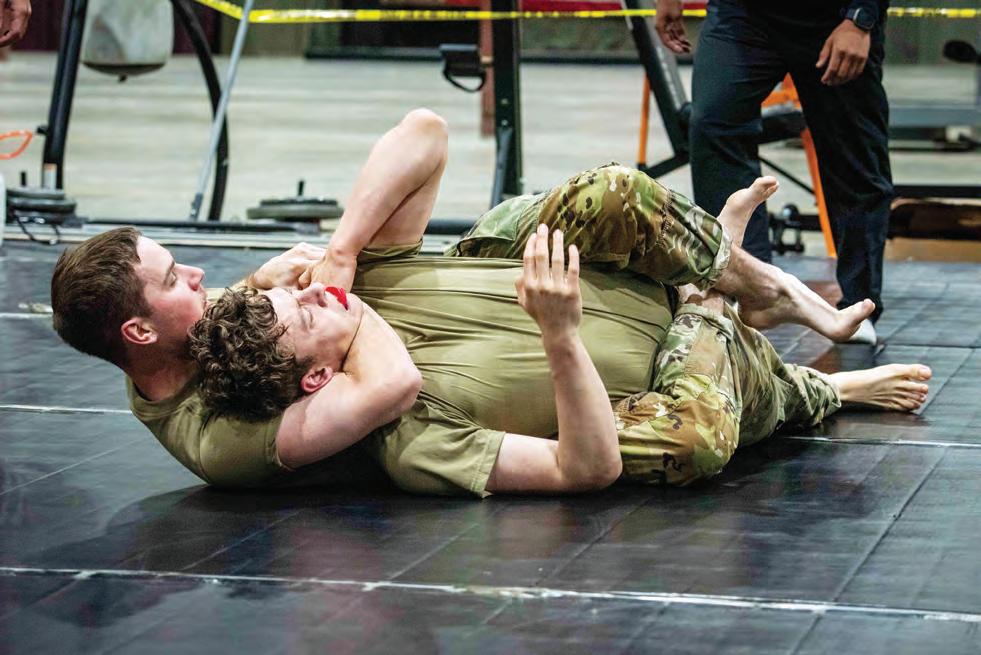
simulations
air crew, cargo and distinguished visitors during operations on austere airfields throughout their area of responsibility to aid in humanitarian missions and Department of War operations.
From Page 4
said. “Now multiply this across thousands of components, and you see why our $185 billion budget simply doesn’t buy enough combat power, and in some cases, the parts take literally years to arrive for our soldiers.”
Driscoll vowed to “cut red tape” until soldiers have battlefield technology more advanced than
they “use at home.”
“When you train you literally step into the same platforms that we fielded 30 to 40 years ago, like the Humvee,” Driscoll said. “You struggle to communicate beyond line of sight, and you wonder why the hell you can’t just use the smartphone in your pocket.
“Before and after work our soldiers live in the real world, but when they’re on duty, our soldiers time travel to the [technology of] the early 2000s at best – or earlier.”
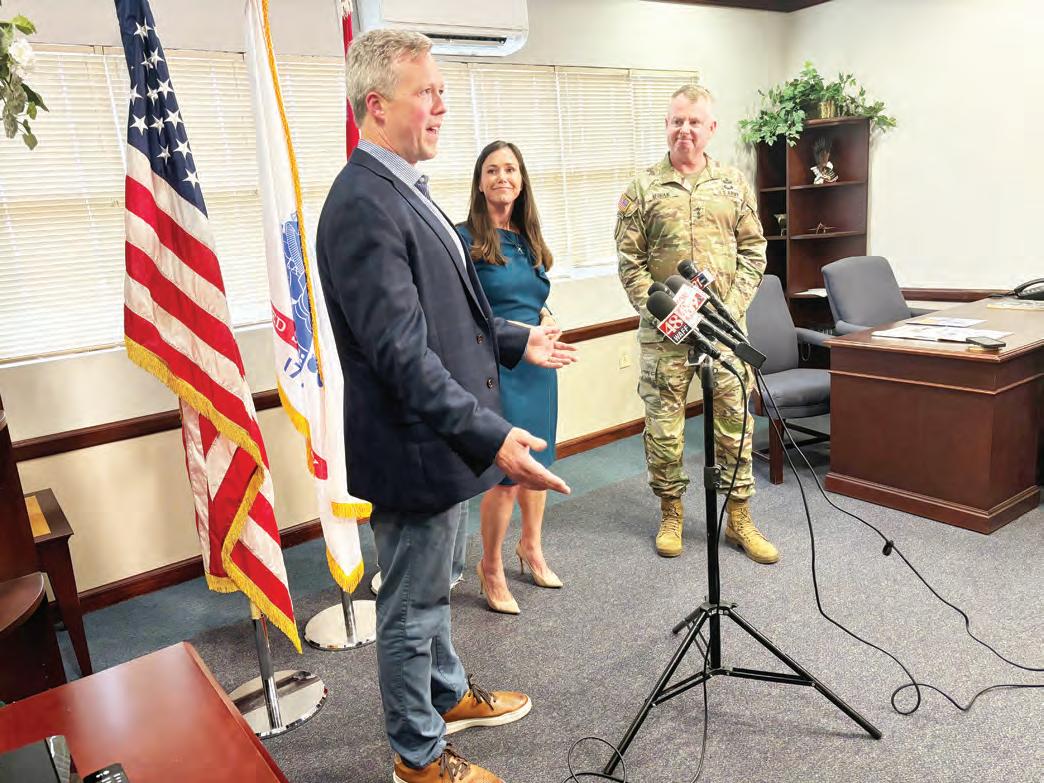
Security Forces Squadron participated in a Fly Away Security Team training course at Joint Base Elmendorf-Richardson, Alaska, Sept. 15-19.
Fly Away Security Team training is a five-day, 40-hour course that challenges airmen physically and mentally to enhance their lethality while protecting aircraft, aircrew, cargo and distinguished visitors during operations on austere airfields.
They aid in humanitarian missions and War Department operations; their missions typically involve providing a security perimeter around aircraft at unsecured, foreign airfields.
“Fly Away Security is a certification that should carry a lot of weight – it is not for your average security forces member,” said Air Force Staff Sgt. Taylor Davis, 673rd Security Forces Squadron noncommissioned officer in charge of small unmanned aircraft systems. “Here at [Joint Base ElmendorfRichardson], we hold the FAST to a higher standard, and we train them at a higher standard; we train them to win.”

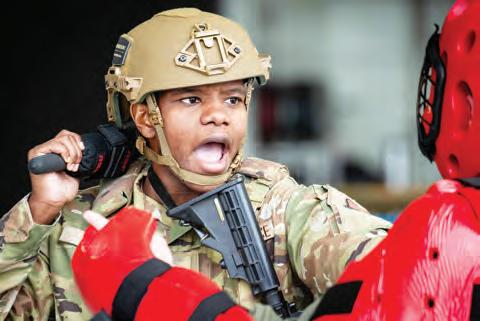
During the course, students undergo combat and hands-on training. They work through real-world simulations, demonstrating skills they have learned throughout the
week. Some of the training included peer-on-peer wrestling, baton evaluation and flightline training with a C-17 Globemaster III assigned to the 517th Airlift Squadron.
“We train our members to go out to these austere locations or airfields that do not have adequate security,” said Air Force Tech. Sgt. Adam Stanley, 673rd Security Forces Squadron base defense noncommissioned officer in charge. “They have been trusted in protecting personnel and assets to provide a safer environment within their area of responsibility.”
The 673rd Security Forces Squadron conducts FAST training courses multiple times a year, not only for its own members but also for other Air Force units. They plan to expand the program to enhance security for airfields and aircraft.
From Page 5
U.S. 5th Fleet’s Task Force 55/Destroyer Squadron (DESRON) 50, responsible for surface forces across the U.S. Central Command area of responsibility, including patrol craft, independently deploying ships and now, littoral combat ships, is charged with the mine countermeasures mission. Four littoral combat ships (LCS) are slated to deploy to Bahrain to replace the decommissioned MCM ships that have operated forward in 5th Fleet area of operations for decades.
USS Canberra (LCS 30) was the first Independence-variant LCS to deploy with the mine
From Page 2
veterans save while continuing to contribute directly to our nation’s military mission.”
100% of Exchange earnings support military communities. In
package to the region and arrived at NSA Bahrain, May 22. Canberra has an integrated suite of unmanned maritime systems and sensors, and is designed to locate, identify and destroy mines while increasing the ship’s standoff distance from a threat. NAVCENT/C5F is the maritime component commander of U.S. Central Command, whose area of responsibility encompasses about 2.5 million square miles of water area and includes the Arabian Gulf, Red Sea, Gulf of Oman and parts of the Indian Ocean. This expanse, comprised of 21 countries, includes three critical chokepoints at the Strait of Hormuz, the Suez Canal, and the Bab al-Mandeb Strait at the southern tip of Yemen.
the last 10 years, the Exchange benefit has provided $15 billion in value, including support of critical military quality-of-life programs.
For more information on veteran shopping benefits and to register for online shopping access, visit aafes.media/ paveterans.
















America’s growing tensions with China and Russia. And that thinking also ties into the state’s unique and tricky position in the military’s command structure.
Geographically, the protection of Alaska falls under the responsibility of U.S. Northern Command, or Northcom, a military unit headquartered in Colorado that’s charged with homeland defense.
But most of the specific forces stationed at Alaska bases – the fighter jets, the cargo planes and the thousands of soldiers –technically report to U.S. Indo-Pacific Command, or Indopacom, a Hawaiibased unit expected to play a key role in any conflict with China.
The overlapping commands have long fueled concern among defense experts about competing priorities: How will the military manage to maintain and defend Alaska’s essential infrastructure if, for example, many of the jets and other assets based in the state are ordered to report to a Pacific conflict by Hawaii-based leaders?
This year’s drills were geared toward that exact type of scenario, as they brought together forces under both the Indopacom and Northcom umbrellas, according to Goodman, the general running Northern Edge.
The military, he said, needs to make sure “there is no such thing as a seam between Northcom and Indopacom – in a realistic scenario, that we’re able to both defend the homeland in this key geographic location in Alaska, in the Arctic, as well as project power.”
Alaska as ‘nextbest alternative’
One element of the Arctic Edge drills hinted at the potential for a conflict in the Pacific to involve not just Anchorage- or Fairbanks-based resources dispatched to a far-off location, but for fighting to actually transpire within the state’s borders.
As part of the exercise, members of multiple military branches simulated the quick construction of a backup port near Anchorage – working from the assumption that Anchorage’s main port, which handles both military and civilian cargo, was unavailable.
The scenario didn’t specifically envision why the port was unusable, officials said.
But it’s clear that Alaska’s military infrastructure would hold strategic significance in a Pacific conflict in a way that would likely make it a target for China, according to David Ochmanek, a former deputy assistant secretary of defense who’s now a senior researcher at the RAND think tank.
In the event of a conflict over the contested
island of Taiwan or elsewhere in the Pacific, the state’s bases are effectively part of America’s second line of attack against China, Ochmanek said. That’s because closer U.S. bases in Japan and Guam would likely be overwhelmed by China’s initial attacks – leaving the Alaska bases, and installations in Hawaii, as the likely origin of surviving bombers and jets that could hit Chinese assets.
While China’s current capacity to reach Alaska with missiles is not well understood, it’s fairly clear that China’s military is increasingly interested in finding ways to put Alaska’s bases at risk –and that they’re capable of achieving that over time, Ochmanek added.
“It would be a mistake to assume that those bases will be in sanctuary for the indefinite future,” Ochmanek said. “The Chinese are going to make darn sure that we can’t make effective use of those closer-in bases. But they understand that we’re posturing Alaska and Hawaii as the next-best alternative to generate bomber missions. And they’re increasingly interested in finding ways to suppress that.”
Murkowski said she prefers to see her home state not as a potential target but as a region that’s well-defended, thanks to the presence of so many fighter jets and troops.
Alaskans can regularly witness those jets conducting practice maneuvers above Anchorage and Fairbanks. But Murkowski said that Alaskans who live and work outside the state’s military bases can miss the huge numbers of people and complex choreography that goes into large-scale troop and aircraft movements and exercises.
“Most people have no idea that it’s happening,” she said.
Murkowski got a close look at that capacity when she flew out from Anchorage’s Joint Base Elmendorf-Richardson to the U.S.S. Abraham Lincoln aircraft carrier during the Northern Edge drills.
Murkowski donned a helmet, life preserver and goggles to fly, she said, 200 miles across the Gulf of Alaska in a twin-rotored Osprey aircraft – peering out over an open ramp that looked onto the “wide ocean.”
She was greeted on deck by an honor guard, then watched as Navy personnel coordinated the takeoff of a dozen fighter jets, communicating solely through hand signals because of the roar of the engines.
“In Anchorage and around Fairbanks, we get used to seeing the jets when there’s exercises. You hear them overhead. But you have no appreciation of what you’re seeing,” she said. “The heat and the fire and the noise and just everything that resonates from the power of those jets taking off is nothing short of incredible.”
Patricia K ime KFF HEALTH NEWS
WASHINGTON, D.C. —
At a memorial service in 2022, veteran Air Force Capt. Monte Watts bumped into a fellow former Minuteman III nuclear missile operator, who told him that she had non-Hodgkin lymphoma.
Watts knew other missileers with similar cancers. But the connection really hit home later that same January day, when the results of a blood test revealed that Watts himself had chronic lymphocytic leukemia, a type of non-Hodgkin lymphoma.
“I don’t know if it was ironic or serendipitous or what the right word is, but there it was,” Watts said.
Within the community of U.S. service members who staff nuclear missile silos scattered across the Northern Rockies and Great Plains, suspicions had long been brewing that their workplaces were unsafe. Just months after Watts was diagnosed in 2022, Lt. Col. Danny Sebeck, a former Air Force missileer who had transferred to the U.S. Space Force, wrote a brief on a potential cancer cluster among people who served at Minuteman III launch control centers on Malmstrom Air Force Base in Montana.
Sebeck identified 36 former workers who served primarily from 1993 to 2011 and had been diagnosed with cancer, including himself. Of those, 11 had non-Hodgkin lymphoma; three had died. The Air Force responded swiftly to Sebeck’s findings, launching a massive investigation into cancer cases and the environment at three intercontinental ballistic missile bases and a California launch facility. The goal is to complete the research by the end of 2025.
The service has released portions of the studies as they conclude, holding online town halls and briefings to highlight its findings. But while former missileers say they are heartened by the rapid response, they remain concerned that the research, which crosses decades and includes thousands of ICBM personnel and administrative workers, may address too large a population or use statistical analyses that won’t show a connection between their illnesses and their military service.
They need that tie to expedite benefits from the Department of Veterans Affairs.
Historically, the Department of Defense has been slow to recognize potential environmental diseases. Veterans sickened by exposure to Agent Orange in Vietnam, Marines who drank contaminated water at Camp Lejeune, North Carolina, and service members who lived and worked near burn pits in Iraq and Afghanistan fought for years to have their illnesses acknowledged as related to military service.

In the case of the missileers, the Air Force already had studied potential contamination and cancer at Malmstrom in 2001 and 2005. That research concluded that launch control centers were “safe and healthy working environments.”
But with Sebeck’s presentation and the decision to pursue further investigation, Air Force Global Strike Command – the unit responsible for managing nuclear missile silos and aircraft-based nuclear weapons – said the earlier studies may not have included a large enough sampling of medical records to be comprehensive.

Sebeck, who serves as co-director of the Torchlight Initiative, an advocacy group that supports ICBM personnel and their families, told congressional Democrats on April 8 that the Defense Department has not accurately tracked exposures to the community, making it difficult for veterans to prove a link and obtain VA health care and disability compensation.
“I had to go to a VA person and pull some papers,” Sebeck said, referring to the government system for recording service members’ environmental risks. “It says that I visited Poland once. It doesn’t mention that I pulled 148 alerts in a launch control center with polychlorinated biphenyls and with this contaminated air and water.”
PCBs – and the missileers exposed to them
PCBs are synthetic chemicals once used in industry, including missile control electrical components such as display screens, keyboards, and circuit breakers. They have been banned for manufacture since 1979, deemed toxic and a likely carcinogen by the Environmental Protection Agency.
The Air Force’s Missile Community Cancer Study compares 14 types of common cancers in the general U.S. population and the missile community and also studies the environments at Malmstrom Air Force Base in Montana, F.E. Warren Air Force Base in Wyoming, Minot Air Force Base in North Dakota, and Vandenberg Space Force Base in California to determine whether they may have contributed to the risk of developing cancer.
The Malmstrom, Warren, and Minot bases together field 400 Minuteman III missiles, the land-based leg of the U.S. nuclear triad, which also includes submarine- and aircraft-launched nuclear weapons. The missiles are housed in silos spread across parts of Montana, North Dakota, Wyoming, Colorado, and Nebraska, staffed around the clock by missileers operating from underground, bunkerlike launch control centers.
So far, the Air Force investigation has found no “statistically elevated” deaths from cancer in the missile community compared with the general population, and it found that the death rates for four types of common cancers –non-Hodgkin lymphoma, lung, colon and rectum, and prostate cancer – were significantly lower in missileers than in the general population.
Non-Hodgkin lymphoma accounted for roughly 5.8% of all cancer deaths among people who worked in launch control centers from January 1979 to December 2020.
Early results, derived from Defense Department medical records, found
elevated rates of breast and prostate cancers in the missile community, but a later analysis incorporating additional data did not support those findings. The studies also did not find increased rates of non-Hodgkin lymphoma.
Air Force officials noted during a June 4 online town hall, however, that these assessments are based on roughly half the data the service expects to review for its final epidemiological reports and cautioned against drawing conclusions given the limitations.
The final incidence report will include federal and state data, including information from civilian cancer registries, and delve into subgroups and exposures, which may “provide deeper insights into the complex relationship” between serving in the missile community and cancer risk, wrote Air Force Col. Richard Speakman in a September 2024 memo on the initial epidemiology results.
Gen. Thomas Bussiere, commander of Air Force Global Strike Command, said during the June town hall that only the final results will determine whether the missile community’s cancer rates are higher than the general population’s.
Some lawmakers share the concern of missileers about the Air Force study. Following the release of a University of North Carolina review of Torchlight Initiative data that showed higher rates of non-Hodgkin lymphoma – at younger ages – among Malmstrom missileers, Rep. Don Bacon (R-Neb.) introduced an amendment to a defense policy bill calling for the National Academies of Sciences, Engineering, and Medicine to review health and safety conditions in the facilities.
“Let’s make sure that we have some outside experts working with the Air Force studying cancer rates with our ICBM missions,” Bacon posted July 30 on the social platform X. “We want to ensure credibility and that whatever results come out, we’ve done total due diligence.” Regarding additional studies on the working environments at the installations and a possible relationship between exposures and cancer risk, Speakman, who commands the Air Force School of Aerospace Medicine, said Malmstrom had two types of PCBs that the other two missile wing bases did not.
He added that benzene, found in cigarette smoke, vehicle exhaust, and gasoline fumes, was the largest contributor to cancer risk in reviews of the bases.
The assessment concluded that health risks to missileers is “low, but it’s not zero,” Speakman said. He said it would be appropriate to monitor the health of launch control workers.
Next steps
Watts, whose story has been highlighted by the Torchlight Initiative, has
asked the Defense Department’s inspector general to investigate – the watchdog agency referred his request to Global Strike Command – and is closely watching the Air Force research. He said the bulk of the cancer cases reported to Torchlight occurred in the 2000s, when ICBM personnel still used technology that contained PCBs, burned classified material such as treated paper and plastic coding devices indoors, and possibly were exposed to contaminated water.
“I open the door and there’s guys standing there in pressurized suits with sampling equipment,” Watts recalled. “They said, ‘We’re here to check for contaminated water.’ I look at my crew commander, and we’re standing there in cotton uniforms. I said, ‘Do you see anything wrong with this?’”
Launch control operators no longer burn code tapes indoors and the Air Force has made improvements to air circulation in the centers. Sebeck wants Congress to consider including missileers and others sickened by exposure to base contamination in the PACT Act, landmark legislation that mandates health care and benefits for veterans sickened by burn pits and other pollutants.
“It’s documented that there is a large cancer cluster in Montana, probably also in Wyoming. People act surprised, but all they have to do is go to the oncology office in Denver. I can find my missileer buddies there. We are sitting in the same chairs getting chemotherapy,” Sebeck said. Air Force Global Strike Command spokesperson Maj. Lauren Linscott said in response to Sebeck’s remarks that the unit understands the impact of cancer on its personnel and is committed to supporting them.
“While current findings are preliminary and no conclusions can yet be drawn, we are dedicated to a rigorous, peer-reviewed, data-driven process to better understand potential health risks because the safety of our airmen is our top priority,” Linscott said. Bills introduced in the House and Senate would address the situation. In addition to Bacon’s amendment, the Senate version of an annual defense policy bill would require a “deep cleaning” of launch control centers every five years until the sites are decommissioned as a new ICBM, the Sentinel, replaces the Minuteman IIIs. The Air Force aims to release its final epidemiological report by the end of the year.
KFF Health News is a national newsroom that produces in-depth journalism about health issues and is one of the core operating programs of KFF – the independent source for health policy research, polling and journalism.













